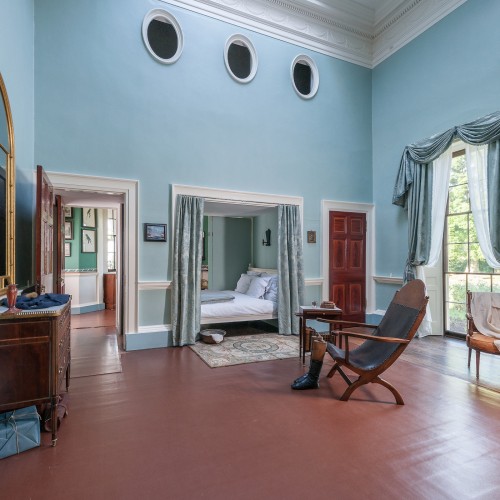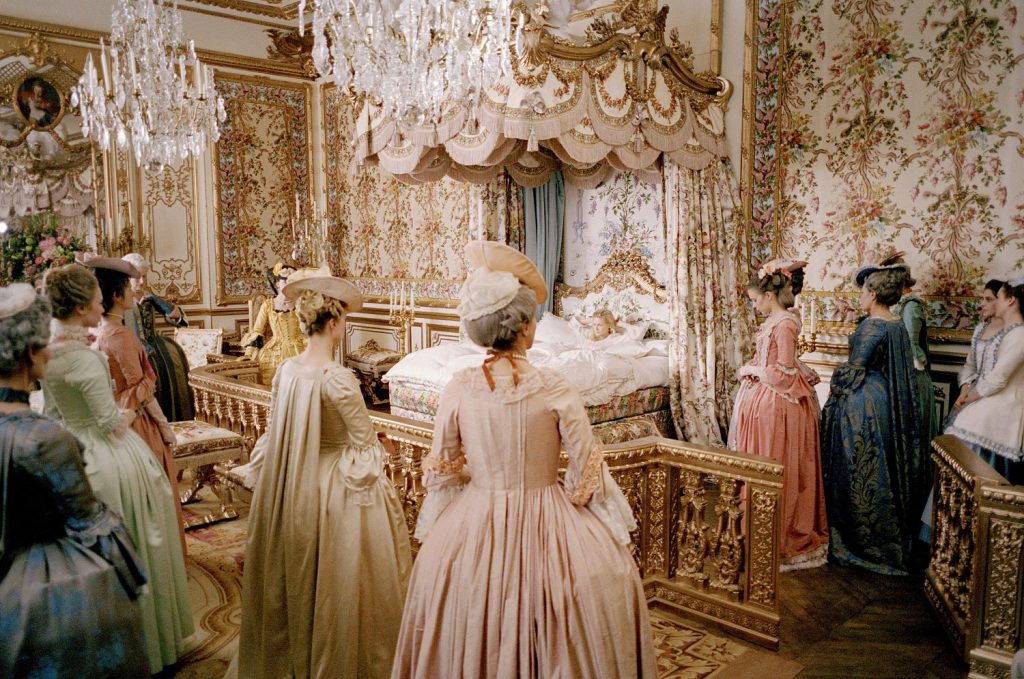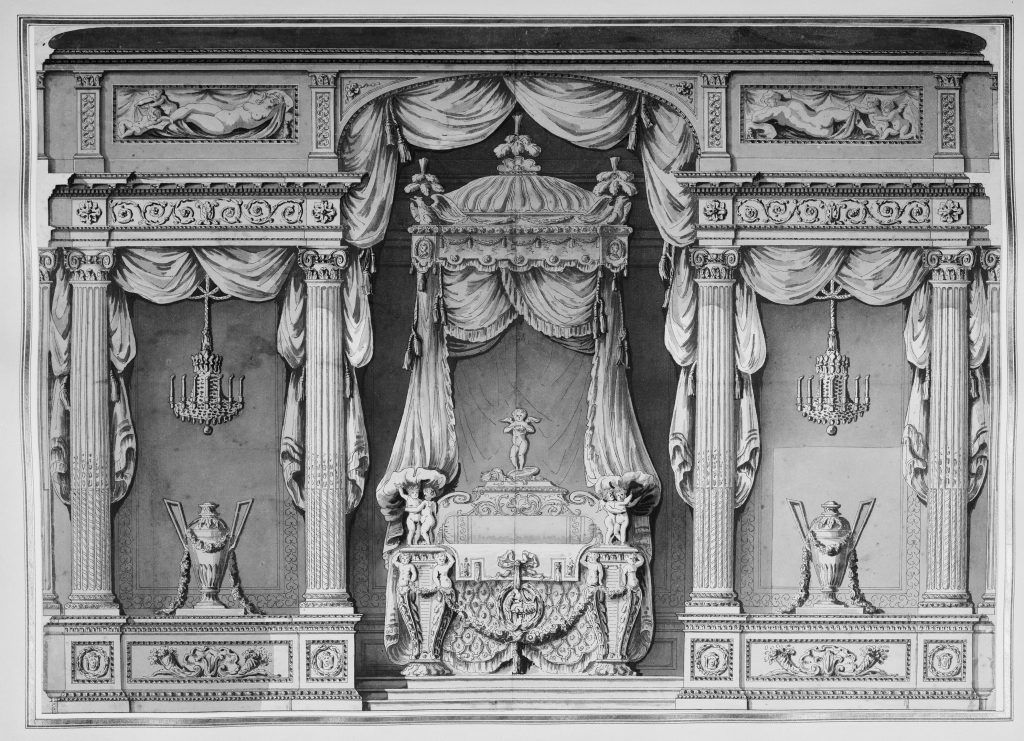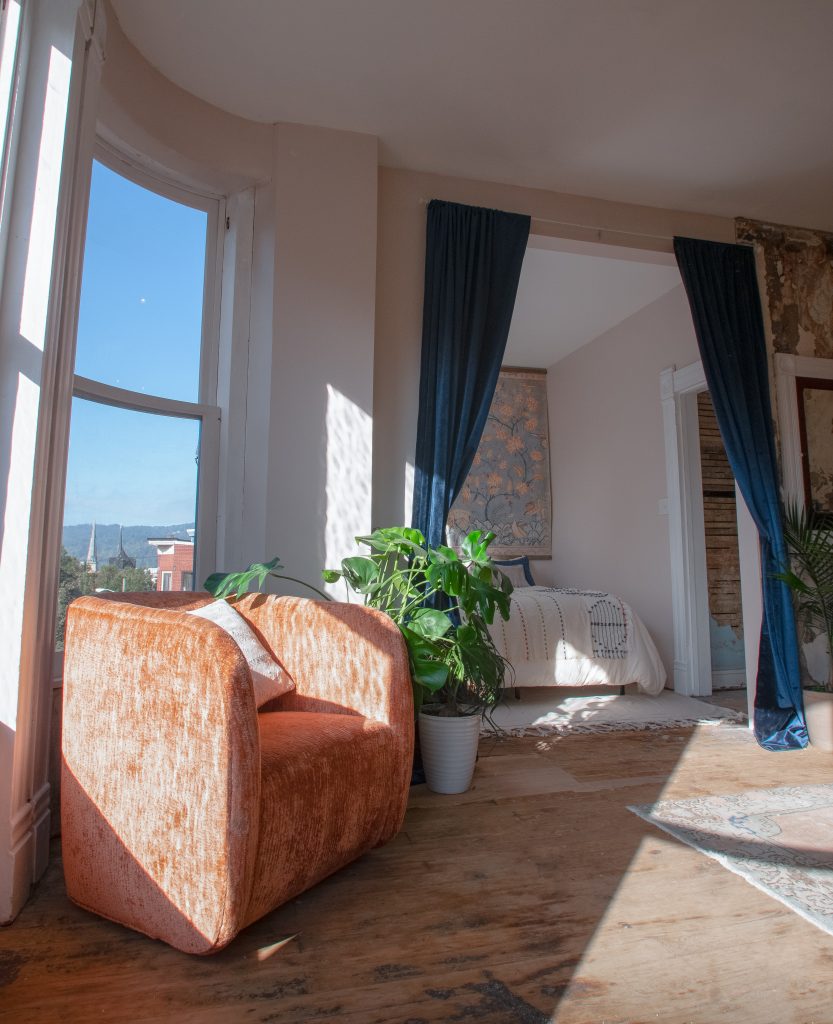The Bed Nook Reveal
This is a very exciting post for me to write, because I finally have a BED at the Mclain House. This was supposed to happen some time ago (ahem, One Room Challenge), but as you all know now, life got crazy, we filmed a tv show, and my bedroom was swiftly forgotten.
Except not really, because I have been dying to get into this space. From the very beginning I’ve had a clear vision of what I wanted the main bedroom to look like, and what I wanted in it. The main gist was this – I wanted a giant bed for my giant dog, and an informal sitting area where I wouldn’t have to worry about hiding my tv, laptop charger, phone charger, dog toys, etc.
That main space is super close to being finished, but really won’t look done until I move in. The bed nook however, well let me just show you.

The Bed Nook
So, historically speaking, the main bedroom of the Mclain House was actually the back bedroom, and this front room was the sitting room for that space. The little side nook either would have been incorporated as a sewing room, nursery, or possibly totally closed off from the other spaces. As much as I wanted a baller bedroom, I didn’t need that much space, and so we closed the doorway between front and back rooms, leaving us with what we have today.

A Terrifying Beginning
It’s worth pointing out that before I could even consider putting a bed in here, we had a lot of work to do. When I bought the house, this room was arguably the most terrible and terrifying. All of the windows were gone, and the ceiling was falling in. Most of this damage was directly related to the lack of gutters and water infiltration issues that caused everything to kind of disintegrate. All that’s a story for a different day, but let’s take a look at where we started. Gross.

Alcove Beds
Despite the horror film appearance, looking at the space, all I could think was “Alcove bed”. For those of you that don’t know, I got my start in architectural history at James Madison’s Montpelier. Now, Jimmy didn’t have an alcove bed, but he spent a lot of time in them, because his best friend Thomas Jefferson put them everywhere. TJ liked to take credit for a lot, but he actually saw this concept during his time travelling in France, where alcove beds were extremely popular in the late 18th century and beyond. (Now technically, the French got the idea from medieval times, but those beds were pretty rough, generally infested with one thing or another, and not at all aesthetically pleasing).


The French alcove beds really range from cute, frilly beds nestled into walls for spatial and thermal efficiency, all the way up to fancy, stage-like setups that allowed the French court to essentially stand at the foot of a royal bed and watch the king go to bed and wake up. These were called coucher and lever ceremonies, and so those alcove beds were literally built to facilitate this strange ritual. Remember in Marie Antoinette when she wakes up and people are all standing around staring at her? That was a pretty accurate depiction of a lever ceremony, except her curtains would have been drawn. The curtains were a particularly important part of the alcove bed, because they shielded the private activity from the public part of the room.


So there you have it, the design inspiration of an architectural historian. Now, I did not want any lever or coucher ceremonies happening in my bedroom, nor was I interested in such a fancy, frilly set up, but rather I wanted my bed nook to evoke the general feeling of 18th century French royalty.
My Alcove Bed
This meant implementing a few things. First, I knew I wanted to put the bed in the small area off of the main bedroom, and make that the sole focus of the space.
Next, I wanted heavy, rich feeling curtains that could separate the sleeping space from the living space. Whether I want to go to bed early while my boyfriend watches tv, or just simply draw the curtains during the day so I don’t have to look at an unmade bed, separating the spaces felt as important to me as it did to Marie.

Finally, I wanted a bed made of the same, natural materials that have been used in beds for hundreds of years. As a preservationist, most of the activity in my house is focused on restoring elements of the home, or bringing vintage pieces in to furnish it. Any time I make a new purchase, like a bed, I try to only bring in materials that I can identify. When I got around to shopping for mattresses, I was shocked by just how synthetic and unrecognizable many of them are.
Back when Marie Antoinette was sleeping in her alcove bed, she would have slept on a cotton or linen covered mattress, stuffed with natural materials like coconut fiber, wool, horsehair or down. The lower income masses were also sleeping on natural materials like grasses and hay. Not great for allergies, but also not doing any toxic off gassing.
Even a few decades ago, our grandparents were sleeping on mattresses supported by metal coils, and layered with wool, cotton, and other recognizable materials. Then right around the end of the second world war, technology exploded, and so did the number of chemicals and synthetic materials available. Like so many products, mattresses changed, and their makeup became more unrecognizable.
My Naturepedic Mattress
I don’t like unrecognizable materials that sound like a science experiment, and I especially don’t like to put my face on them for 6-9 hours a night while I sleep.
Enter, Naturepedic. Naturepedic makes beautiful, durable mattresses that do not poison you while you sleep, aren’t made of unrecognizable synthetic materials that decimate our environment, and are meant to last for years in your home instead of centuries in a landfill.
Working with them I learned so much, and as many of you might remember, even got to check out the factory and see how the mattresses are made!



I learned so much about the materials used, the craftspeople that assemble the mattresses, and how I could customize the layers to suit myself, my partner, and Marshall!
My mattress arrived in several, manageable sized boxes (super helpful when you have to carry them up two flights of stairs) and it was honestly fun to put each layer together, and zip everything up at the end. The process was not hard at all, and it was reassuring to see every component of my bed. The best part? It even smelled natural. You know how sometimes you get furniture with that new car smell that leaves you wondering what exactly that even is? This mattress does not smell like that. It smells like…fiber. Wool or linen or something recognizable and unalarming. It’s the little things.
The Final Touches
There really wasn’t a whole lot to this bedroom beyond a few key elements. The bed was lovingly created and gifted by Naturepedic, and stands as the focal point of the space.
Keeping with my initial inspiration, I decided to forego a headboard and instead do a full wall tapestry as a nod to the opulent textiles that accompanied the alcove beds of the 18th century. I love the natural motif of this one I discovered at the Anthropologie outlet. It’s colorful while still being soothing enough for a sleeping space.
And finally the curtains. The curtains were made by my loving mother who carefully considered height, weight, and the perfect pooling factor when she created them. We’re still debating what kind of fancy tie backs to install, but for now I think it looks just perfect. Marshall’s pretty happy with his new set up too.









The curtains!!!
It’s amazing !!! Love how it turned out 😊❤️
omg gorgeous!
Wow the transformation in this room is absolutely amazing! Congrats!
How was the tapestry at anthropologie sold? As a piece of fabric? Framed piece? Whole space is beautiful!
Stunning!!!
My hubby decided to watch the You tube video that you were in. I just wanted to say that you are amazing😄 Very brave! and we think it is awesome what you are doing! Have fun! It is really neat to see young people appreciating old houses and making them young homes again. God Bless
Being a “McLain” is what super intrigued me to follow you!
Can’t wait to see what you do with this home!